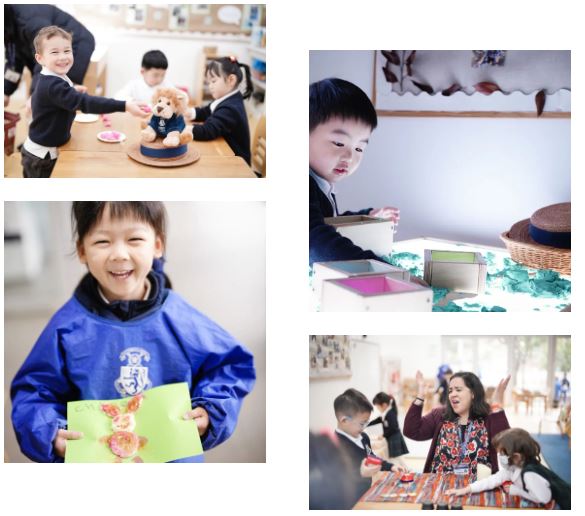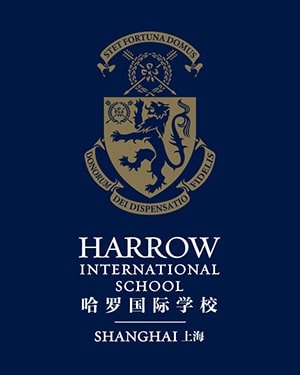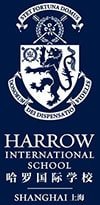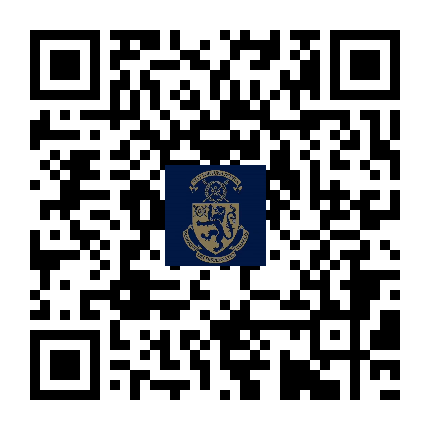Harrow International School is delighted to be one of only two schools in China to have launched the Curiosity Approach Accreditation. According to the UK accreditation team, Harrow Shanghai has the highest number of teachers ever to be part of this amazing journey. This is a really exciting time for little Harrovians and our community.

It is a modern-day approach to early childhood. The Curiosity Approach is a beautiful combination of all the most wonderful early-year theorists and theories that went before us, such as Loris Malaguzzi (Reggio Emilia), Rudolph Steiner (Waldorf Education), and Maria Montessori. Everything that we do is child-driven, and in “every single element of the day, the children are at the centre of everything” (L. Hellyn Curiosity Approach).
We are always asking ourselves the following questions:
Who is this for?
Why am I doing it?
What is its purpose?
Does it meet the child’s needs?
The Curiosity Approach advocates that an environment “should feel like an extension of home and not a watered-down version of school.” (S. Bennett, The Curiosity Approach) We have moved away from brightly decorated environments and are attempting to avoid the use of plastic toys. Instead, we use recycled materials, authentic resources, natural elements from the outdoors, and a wealth of loose parts.
Loose parts are items that can be used in many ways and have no specific outcomes. Let’s look at a plastic, colourful toy garage. It has one purpose: to be a garage. The children drive the cars up and down the ramp and park them. However, the learning is limited. Now, let’s imagine you are in the Harrow School playground in Shanghai. We have planks, crates, boxes, guttering, and endless supplies of open resources where children are encouraged to “think outside the box.” Children are going to lift, carry, push, pull, and rely on each other for help. Things will be difficult to balance and arrange; they will make mistakes, but we are encouraging our little ones to be resilient, to persevere, and to become more independent, even as young as 18 months.
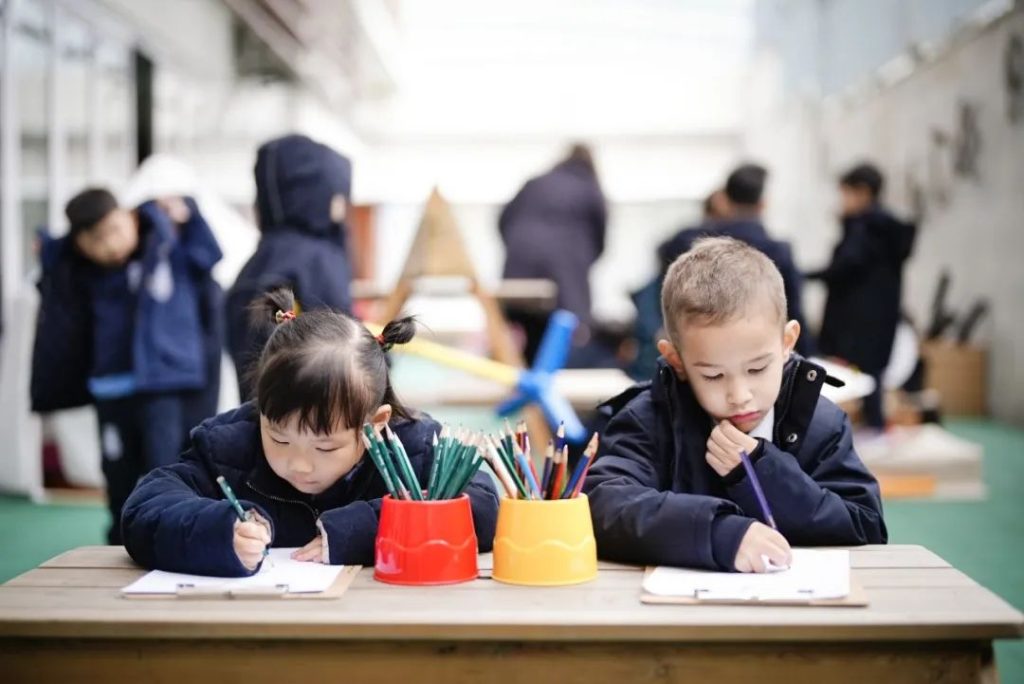
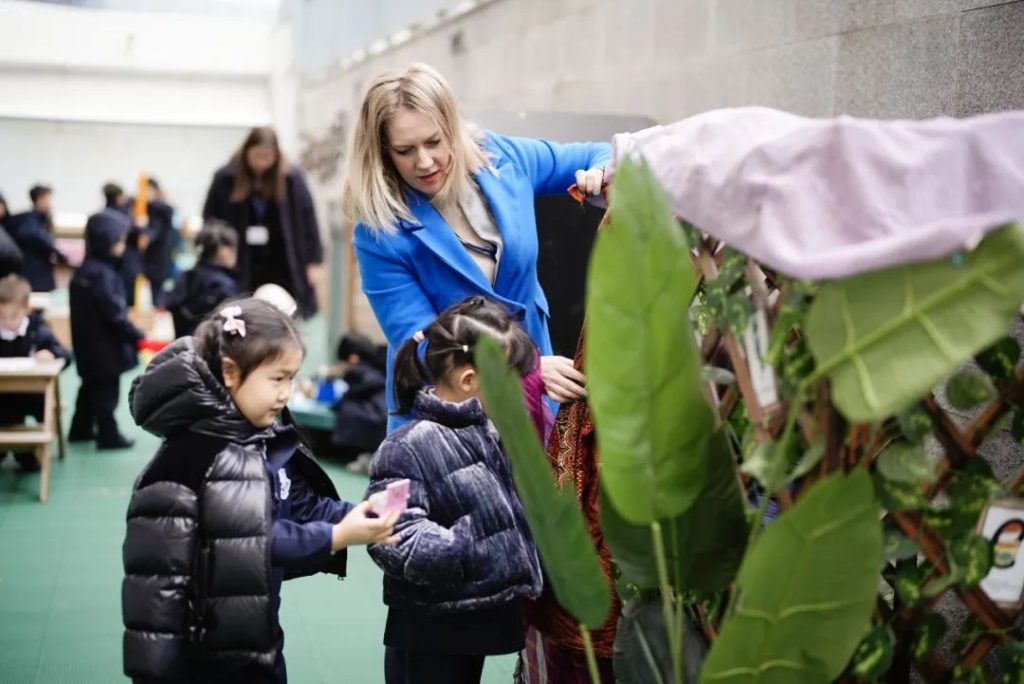
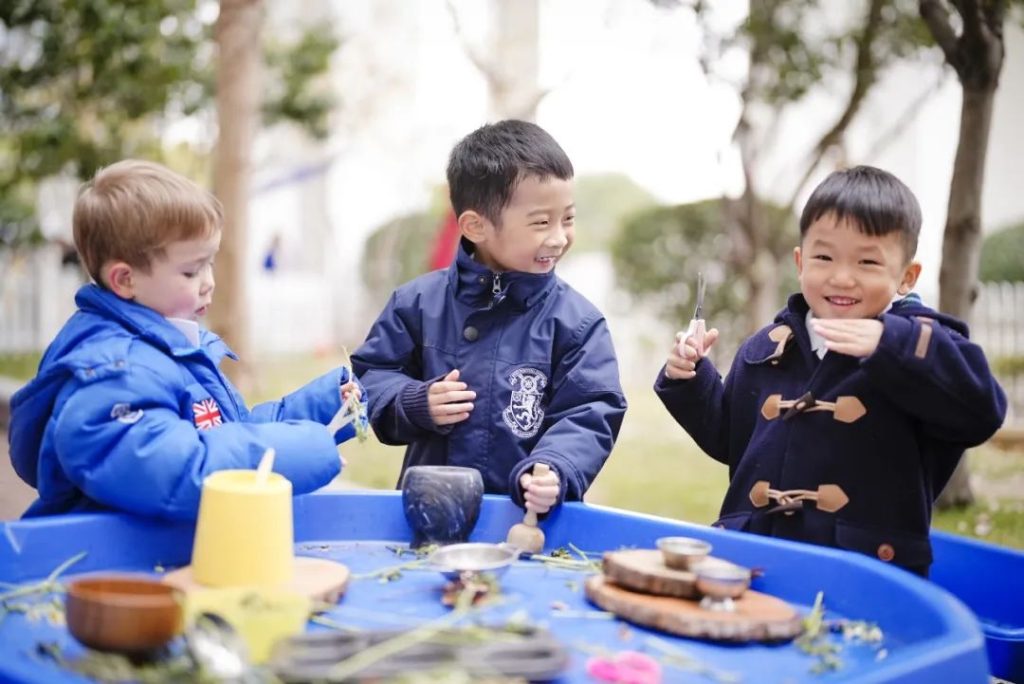
At Harrow Shanghai, we are moving away from traditional manufactured plastic toys to resources that inspire curiosity, awe, and wonder. Children can mix loose parts, combine them, join them together, and line them up. Playing with loose parts rather than a specific toy encourages creativity, critical thinking, and problem solving. Children have lots of opportunities to develop their languages and incorporate maths by counting and sorting. Endless possibilities.
On a number of occasions, when visitors have come into our early years setting, they have been shocked by the calmness and warmth of the place. Quiet music is playing in the background, lots of natural light is beaming in through the windows, and authentic natural resources are placed carefully and thoughtfully around the classroom and outdoors. Bright colours have changed to a more neutral décor. In our classrooms, we have brought nature in, such as lots of plants, and the children are playing with real things such as pottery, ceramics, wood, and tin.
Studies have shown that when children are bombarded with too much colour and sensory noise, they cannot concentrate, they get frustrated, and their behaviour can deteriorate. Our beautiful environments inspire our incredible learners to be inquisitive and curious,.The environment sparks intrigue, imagination, creativity, and curiosity.
By taking on the Curiosity Approach Accreditation at Harrow Shanghai, we are providing our incredible little learners with the best start in life, allowing them the opportunity to learn, interact, and grow, creating the “thinkers and doers” of the future.
